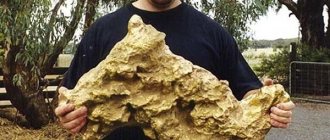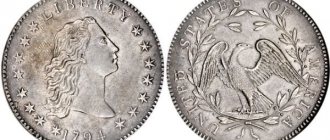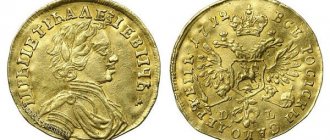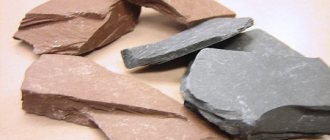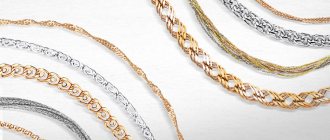04/23/2018 The search for precious metal has always attracted people. Agree, it’s nice to discover gold coins, jewelry or nuggets. In this material, we will conduct a comparative analysis of the most popular models and help you choose a device with the optimal combination of cost and parameters.
Choosing the best gold detector
Metal detector: purpose and principle of operation
A metal detector for gold is a device that indicates the location of metal with different compositions in the ground or water. The equipment records the reflected signal, similar to an echo sounder. Based on the response signal, it determines whether there is a particular metal under the search detector.
For proper functioning, you need a receiving and transmitting antenna. Metal detectors operating according to the VLF and PI schemes have combined antennas, which are called a coil or frame. To catch a signal, the coil must be moved.
RF-powered metal detectors have 2 coils located about half a meter apart from each other. During operation, they do not require constant displacement. There is another type of equipment - pinpointers, which are called precision pointers. They are able to catch interruptions and changes in the eddy current emitted by a metal object.
Assembly procedure and design
Let's start assembling:
- The receiver is mounted on the inside of the case cover, the calculator on the bottom.
- We set up the receiver: set the volume and AM range to maximum.
- We turn on the calculator, the receiver should respond by making noise. Close the housing cover. The receiver relative to the calculator must be fixed in such a position that the receiver stops picking up interference from the latter. The device is ready for use.
Anyone who understands electronics can assemble a more complex metal detector, the Pirat model. The name is an abbreviation, where pi is the operating principle based on pulsed radiation, and rat is “Radio Cattle,” an abbreviated name for the resource of its developers.
Table: types of metal detector devices, pros and cons
| Device type | pros | Minuses |
| VLF | - finds small objects; — discrimination allows you to exclude objects with a certain conductivity from the search. | — limited depth of object detection. — the maximum detection depth is 60 cm. |
| P.I. | — there is discrimination based on the size of objects; - designed for greater depth. | — conductivity interference cannot be ruled out |
| RF | - finds objects at depth; - designed for searching for large objects | — no discrimination; |
Metal detector Garrett AT Gold
Metal detectors for gold: types and specifics
Not all metal detectors are the same. To see the difference, you need to study the characteristics of the device. High frequencies, more than 14 kHz, are important for searching for small objects.
All search equipment can be divided into universal or specialized. The first type is suitable for various metals, including precious stones. There is a wide range of options here, and it is possible to make custom settings.
Specialized equipment is being developed to determine gold in conditions where this is difficult to do. Such equipment can cost a lot of money, which means it is used only by professionals. An example of such technology is the demon-yu electrochemical detector from Ultramag.
Its task is to establish the authenticity of precious products, non-ferrous and ferrous metals, etc. The device is used in Russia, Ukraine and many other countries.
Beach
The purpose of such equipment is to find precious metals on a fresh or salt beach. The metal detector must be protected from water and have high ground balance. Such requirements are associated with high mineralization of the soil, which makes searching difficult. Therefore, the device must distinguish between signals emanating from ferrous metal and directly from the precious metal.
Not all metal detectors see gold the same way
Water
Precious jewelry is often hidden at knee depth. To do this, the gold detector must have a waterproof coil and a protected housing. It is possible to search for precious metals at a depth of up to 3 meters. To hear the sound of the device, it is better to use special headphones.
How to use a metal detector correctly
First of all - and not later, as Russian people like to do - read the instructions. Not only will she tell you, she will save you. For example, from turning on a metal detector in an apartment stuffed with metal and its immediate failure due to overload.
Equipment setup
We believe that we have decided on the model of a metal detector for gold and have chosen, for example, Minelab Safari or Fisher F75 SE.
First of all, we deal with ground detuning. If necessary, we pump it out. If not, turn on the machine.
The next step is to adjust the sensitivity - to the maximum, but so that there are no false positives. Or almost none.
Next we set up discrimination. We exclude ferrous metal. If we want only and exclusively gold, we can cut out segments to the right, except for the right one - it always works.
If the metal detector has a thrash hold - a threshold sound - be sure to set it up too. Often a small thing does not give a clear signal, but only interrupts the trash hold - such an interruption will tell an experienced treasure hunter more than a loudspeaker screaming at the top of his lungs to a beginner.
By the way, if we consider universal solutions, then Polish new products immediately come to mind - Rutus Argo NE and Rutus Alter 71. This is where the work with thrashhold is done perfectly.
Where to start looking for gold
If the Klondike is unattainable and you don’t even really want to go to Kolyma, a treasure hunter can try his hand at searching for gold in crowded places in nature.
On public beaches
The site has material on how to properly look for jewelry on the beaches. Let's not repeat ourselves, just note that people are strange - why not leave the jewelry at home or in a hotel?
Beach Cop with Metal Detector.
Let us remind you that not all beaches allow you to walk like this, casually waving a metal detector. We read the article and prepare for the legal aspects.
Watch the video of the channel Search for Gold - Aleksey Schwarz. This is the kind of gold jewelry you come across on the beaches.
Requirements for an effective metal detector for gold prospecting
When choosing a metal detector, the following indicators are important:
- quality of goal separation;
- size of found objects;
- depth;
- soil rebuilding.
Qualitative target separation and discrimination
A high-quality detector should distinguish gold from iron. Devices with vDI from 0 to 99 show vDI of precious metal from 40-45, while ferrous metal - no more than 30. The signal of precious metal can be given by metal affected by severe corrosion.
Eliminating interference is the task of discrimination. The more thin bars the scale contains, the less chance of getting a false signal.
Magnitude of discrimination target
The indicator depends on the frequency at which the search is carried out. The higher the frequency, the smaller the wave, which means the smaller objects can be found. The minimum acceptable frequency for gold miners is 14 kHz.
Metal detector Makro Kruzer Gold
Search depth
The greater the depth indicator allowed for the device, the better. This creates a greater chance of finding deposits lying at depths of more than half a meter.
Setting up ground balance
The indicator can be adjusted automatically or manually. It's better when there is manual and automatic balance at the same time. This way there is less chance of catching false signals.
Ground Penetrating Radars
The principle of operation of this device is comparable to the principle of a metal detector - a signal is launched into the medium, which, reflected from the sections of the media, returns back and is processed by a computer.
However, unlike a metal detector, GPR
interacts not only with metal .
This makes it more functional, and the scope of application is wide - from geology to the defense industry .
When choosing between a ground penetrating radar and a metal detector, you should understand the purpose of the entire search procedure and understand that a regular metal detector will be enough to detect lost jewelry.
And a ground penetrating radar also suitable for determining geophysical data of the studied environment to a greater depth than a metal detector, and will help to find gold ore rather than gold chains and rings.
Metal detector pricing factors. Price range
Factors taken into account when pricing are:
- the model was made to search for gold or such a function was obtained by increasing frequencies;
- marketing costs;
- how recognizable the manufacturer is;
- equipment of the device.
Metal detectors for searching for gold vary depending on the following price categories:
- 7 - 15 thousand rubles. - the equipment is designed to search for ordinary metal;
- 16 - 30 thousand rubles. — some models are able to find nuggets;
- 31 - 60 thousand rubles. — models designed for silver, gold;
- More than 60 thousand rubles. - a technique used by professionals.
Advantages and disadvantages
Depending on the principle of operation implemented in a particular model, the metal detector copes better with certain tasks. Built-in functions are important, for example, moisture resistance, estimated search depth, and soil composition in the area where the search is to be carried out.
- Low-frequency metal detectors respond to metal objects in the depths, but only to large ones, such as a barrel of gold.
- High-frequency devices are better suited for searching for small objects at shallow depths.
If we are talking about a device for searching for gold nuggets and sand, then pulse metal detectors respond best to such objects, but, due to their sensitivity, they will be ineffective if there is a lot of small metal debris in the ground.
All of these factors should be taken into account when choosing the best tool for the job.
Table: TOP 10 effective metal detectors. Comparison of characteristics
The top best devices included 10 metal detectors in the price category from 15 to 50 thousand rubles. The rating is based on user ratings.
| Model | Description | Average cost, rubles |
| Makro Kruzer Gold | The most modern apparatus for searching for precious metals. Is a ground and underwater equipment. The kit includes 2 waterproof coils, a wireless headset, and a charger. There is a rechargeable battery with the ability to connect to a power bank. There is a discriminator, manual and automatic ground balancing. The best option for finding status gold by professionals. | 41 650 |
| Minelab X-Terra 505 DD | A good universal ground high-frequency metal detector. There is a discriminator, ergonomics are thought out. Balancing must be adjusted independently, which requires certain user skills. | 28 990 |
| Garrett ACE 400i | There is automatic ground balancing. The search for nuggets and gold occurs at a frequency of 10 kHz. The model is considered a ground model, but has decent moisture protection for the coil. The product comes with a rich set of accessories: headphones, cases, a CD with instructions in 2 languages. | 25 950 |
| Fisher F75 | Equipped with an elliptical-shaped coil, waterproof, automatic and manual balancing. Operation is carried out at frequencies up to 13 kHz. You can adjust the sensitivity. The model is capable of recognizing coins at a depth of up to 50 cm. | 37 950 |
| Fisher F4 | Unmistakably distinguishes between non-ferrous and ferrous metals at shallow depths. Includes 11”DDBiAxial reel with moisture protection. Power is provided by 2 crown batteries that last up to 30 hours. There is a discriminator, a headphone jack, a speaker and an armrest. You can adjust sensitivity and tone identification. Product weight – 1.4 kg. | 25 200 |
| Minelab GOLD MONSTER 1000 | Designed to find 999 fine items. The device is equipped with two 10"x6" DD, 5" DD coils, headphones, a battery box and a power supply. The model is ground, with moisture protection for the coil. The VLF detection method finds gold grains and nuggets. There is a discriminator, automatic balancing, tone identification and sensitivity adjustment. Weight – 1.33 kg. | 62 900 |
| Garrett AT Gold | Refers to budget professional equipment. A standard coil is available that provides accurate detection at high frequencies up to 18 kHz. There is a discriminator, sensitivity adjustment, headphone jack and speaker. Operation is provided by 4 AA batteries. | 39 650 |
| Minelab X-Terra 305 New | A modified model of a familiar budget device. The device was equipped with another VFLEX detection method, working on VLF technology. Minelab X-Terra should respond to gems in the ground without noticing interference. The company has improved ergonomic indicators, but has left almost no technical specifications. | 19 990 |
| Garrett GTI 2500 | An inexpensive version of the device with manual and automatic ground balancing. Search frequency 7.2 kHz. There is a display showing the current user settings. The device runs on rechargeable batteries. Can be used by lovers of gold status goldie black metal. Refers to ground devices, has a lot of weight. | 20 950 |
| Minelab X-Terra 305 | Made in Australia. The gold reserve distinguishes without errors. Has different search frequencies. Minelab is equipped with a conventional coil, but it does its job perfectly. There is manual balancing, a discriminator and a headset input. Operation is ensured by rechargeable batteries. | 18 450 |
Metal detector Minelab X-Terra 305
Rating of devices and their price
After searching the Internet, the conclusion is that users prefer the devices listed below .
We have compiled a rating of professional metal detectors for searching for coins, recycled gold and lost jewelry from the best and most powerful models at their price.
The price indicated is approximate :
- Xpdeus ($1400);
- Fisher f75 ltd ($1000);
- Minelab Safari ($1000);
- Teknetics t2 ltd ($1000);
- Minelab x-terra 705 ($750);
- Aka Sorex 7281 pro ($750);
- Garrett at pro ($750);
- Aka berkut-5 ($600).
very important to be able to use technology and know how to choose the right equipment, since even a professional with a cheap metal detector who understands how this device works will find more than a “teapot” with a professional tool, even if they search on the same beach.
Thus, the number of finds does not always depend on how much the search apparatus costs.
Where is the best place to start looking for gold?
If gold-bearing places are far away and there is no way to get there, you can try your luck in nature. People often go to parks, beaches, and also often lose jewelry there. The gold miner will be able to test his equipment and try out different settings and functions. But it is important to remember the legal side of the issue and responsibility.
It is better to study the law and the area before starting research in order to understand what you can do and what is punishable.
Underwater metal detectors often do not have a display and the digger works only by ear
What is special about metal detectors for native gold?
First, let’s formulate how a conventional ground metal detector differs from a device for native gold. After all, both of them can find gold. Only the former are focused on jewelry gold, and the latter on natural gold.
Differences:
- Ground metal detectors are focused on searching for coins and jewelry. Gold detectors must look for nuggets.
- Ground metal detectors must have high metal separation in order to see a colored target lying next to (or under) a rusty nail. But instruments for gold - no. Nugget mine detectors must overcome (gold-bearing) heavy soils and find nuggets in them. And it's better to go deeper. And the ground ones - ignore the nails and find coins between them.
- Gold metal detectors usually have a high frequency. As a rule, from 18 kHz. But both 25 and 30 kHz are normal for these devices. But ground mine detectors operate at a frequency of 7 kHz. And 18 kHz is considered a high frequency for them.
Thus, gold metal detectors have different settings than ground detectors.
And this is due to the fact that they solve different problems.
Can grounders see gold nuggets?
Yes they can. Only it will be difficult for them to work on related soils. You'll have to harden your sensitivity. Then the search depth will decrease.
In addition, because The frequency on them is low, then such devices will miss small nuggets.
Is it possible to collect coins with a gold metal detector?
Yes, you can. Only these devices have poor metal separation. Accordingly, they will not see the coins lying next to the nail. Those. You'll have to dig a lot for rusty iron.
Thus, only specialized devices will be included in the TOP metal detectors for gold. There will be no ground mine detectors in this TOP.
Tips on finding gold from metal detecting professionals
- you can explore areas where there used to be deposits, for example, Krasnoyarsk or Chita;
- it is important to study information about the places where you plan to search for gold with a metal detector (pay attention to places where there are minerals, granite, shales and gneisses);
- look for traces of gold mining, these can be mine dumps, blocks of rocks that have fallen on the way, mines and holes in the ground;
- You need to look for gold in rivers in depressions that resemble a “pocket”; the nugget can lie in large underwater rocks and their cracks;
- You need to set aside several days for research;
- It is best to look for treasure with a partner for safety reasons;
- a novice seeker must select equipment for the study area, choose appropriate clothing, shoes, a backpack, a pick, a shovel, a tray, etc. (You can use a used metal detector. You should not buy the necessary equipment on aliexpress, it is better to visit specialized retail outlets);
- you should learn how to rinse sand correctly: the tray should not be overloaded; you need to pour out the water carefully, without haste;
- Each zone needs to be worked especially carefully;
- when searching, it is important to take into account river floods, since gold often lies not only near the riverbed, but also beyond it;
- you need to use a professional metal detector for gold;
- smooth pieces doused with water indicate a long stay in water, which means they were brought from distant territories. (You should look for a rough ingot literally under your feet);
- It is best to start research after a flood or flood;
- Not everyone manages to find the treasure right away; it is important to be persistent and go towards your goal.
conclusions
Treasure hunting sayings that the best discriminator is a shovel are not without meaning. Yes, only by touching the target with your hands can you understand what was in the ground. But is a shovel the most effective discriminator? The answer is negative. Therefore, when going for expensive finds, it is worth arming yourself with an effective tool - a high-quality, deep and high-frequency metal detector.
Take care of yourself, comrades. And good luck on the cop!
What the Law Says About Prospecting for Gold with a Metal Detector
With his own hands, a treasure hunter can find not only wealth, but also problems with the law. The difficulties that amateurs may encounter are set out in Article 243 of the Criminal Code of the Russian Federation “search and (or) removal of archaeological objects from places of occurrence on the surface of the earth, in the ground or under water, carried out without permission (an open sheet), resulting in damage or destruction of the cultural layer" .
What to do with found ancient gold
Russian legislation regarding the activities of treasure hunters is quite confusing. On the one hand, everything that was found in the ground belongs 50% to the state and the same to the finder. But, if the item is more than 100 years old, the seeker has no right to it, since it is government property and should be returned to the owner.
Found gold items
Can you be fined for searching for precious metals with a metal detector in a public place?
There are no penalties for the fact that a person decides to walk around in a public place with a metal detector. But for violation of Art. 243 of the Criminal Code of the Russian Federation, a fine of up to 500,000 rubles or withholding of wages for several years is possible. Punishment is also possible in the form of:
- corrective labor for up to 1 year;
- imprisonment for up to 2 years.
Conducting excavations in places of architectural heritage with “like-minded people” will entail a penalty of imprisonment for up to 6 years.
Mined gold about
Question answer
What is the best metal detector for finding gold nuggets?
Expert opinion
Shabanov Andrey
Amateur prospector, has been searching for gold for over 14 years
Minelab GPZ 7000 is the most powerful and expensive metal detector. The equipment is heavy, its weight is 3.3 kg. There is manual and automatic balancing and is highly sensitive. Even with a lot of weight, the device is balanced and quite easy to operate. There is a waterproof Super-D configuration reel, for which there are no competitive models in the world. Custom settings provide for the use of 3 detection modes. GPS makes it possible to mark areas where the user has already been.
How to make a metal detector yourself
Even those people who are not particularly good at electronics can make a simple device for searching for gold with their own hands.
Part and workpiece materials
To make a metal detector, you will need a radio, an electronic calculator, a plastic box that will serve as the housing, and double-sided tape. Moreover, both the calculator and the radio should be chosen from those that are worse. The calculator will be a source of radiation, and the receiver will capture its echoes.
What model of metal detector is the best for finding gold for the earth?
Expert opinion
Sizov Roman
Member of the “Metal Detectors on the Beach” club in Anapa
White's TM 808 deep metal detector, made in the USA. The model finds metal at depths of up to 5 m. There is manual ground balancing and VLF detection, which allows you to bypass interference. Operating at low frequencies allows users to adjust sensitivity. The design is heavy, its weight is 2.75 kg, but it is quite easy to operate. Professionals recommend using additional dme-03. DME-3 is a device for express identification of various alloys. The device helps to accurately determine the authenticity of metals and has simple functionality. Specialists can buy these models by ordering via the Internet to any city in the country: Moscow, Minsk or St. Petersburg.
How to analyze gold and other precious metals with a detector?
It all depends on the principle on which the analyzer is built and its design. The easiest to handle is a handheld spectrometer, which is similar to a handheld scanner used in stores.
It is necessary to set the expected metal in the settings (i.e., select what we will test for), enter additional parameters (in some models) - this could be, for example, the “white gold” setting, so that the device initially excludes some impurities that are impossible in it.
After this, you need to
point the detector emitter at the product and wait for some time - 15-20 seconds.
After this, information about the chemical composition of the object under study will appear on the screen.
It is more difficult to work with stationary devices, especially those that operate on the electrochemical principle.
This requires certain knowledge.
Before starting to operate the device you must:
- calibrate;
- set the correct mode;
- correctly connect the contacts to the test sample.

